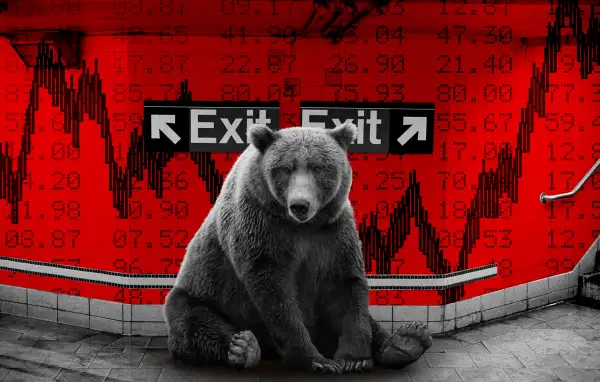Stocks Are Rallying. Does That Mean the Bear Market Is Ending?
Money is not a client of any investment adviser featured on this page. The information provided on this page is for educational purposes only and is not intended as investment advice. Money does not offer advisory services.

The stock market is rallying — but investors shouldn't celebrate just yet.
The S&P 500, an index commonly used to measure how stocks are doing overall, jumped 2.8% Tuesday, while the Dow Jones Industrial Average and the the Nasdaq Composite closed up 2.4% and 3.1%, respectively. Tuesday marked the largest one-day percentage gains since June 24 for all three indexes, and a welcome relief for investors. The S&P 500 was up around 0.9% during trading midday Wednesday as well.
While financial markets for much of the last two years were buoyed by stimulus money from the government and near-zero interest rates, stocks have been struggling after hitting their peak in January amid sky-high inflation and rising interest rates.
The S&P 500 fell into a bear market in June and was still down around 18% for the year at Tuesday's close.
The truth is that rallies like Tuesday's during an overall downturn are common, and they certainly don't mean stocks have hit bottom or are going to recover all their losses in a hurry.
"Bear markets are typically thought of as periods of relentless declines in the market where stocks do nothing but trade lower," analysts at Bespoke Investment Group wrote in a note to clients Tuesday. "The reality of bear markets, though, is that they often include periods of extreme countertrend rallies, sucking investors in along the way."
What past stock market downturns tell us
If history repeats itself, rallies as big as even 5% or more don't necessarily mean the bear market has bottomed.
Look at the dot-com bust. Between the S&P 500's peak in March 2000 to its low in October 2002, the index lost 49% — but along the way it saw 11 different rallies of 5% or more, according to Bespoke.
It's a similar story around the financial crisis of 2008: The S&P 500 experienced 12 different rallies of at least 5% between October 2007 and March 2009, when it lost 57% of its value.
Bespoke even points to early 2020 when COVID-19 first hit the U.S. and stocks crashed. There were three rallies of at least 5% between mid-February and late-March, during which the index overall lost more than one-third of its value, the investment firm found.
"Just when an investor thinks the market may be starting to turn, new positions quickly turn into losers," the analysts write. "The last three periods of major declines for the stock market since 2000 illustrate this trend."
What's the takeaway for investors? Financial advisors tend to recommend that investors don't try to time the market, as it's hard enough for professional traders to do that successfully.
Instead, if you're looking to benefit from an eventual stock market recovery, consider dollar-cost averaging, which entails investing a set amount of money at various intervals. For example, if you have $10,000 saved up that you want to put into the market, you could invest $1,000 every other week until it's all invested.
More from Money:
3 Smart Investing Moves to Make in a Bear Market
How Inflation Should (and Shouldn't) Change Your Investing Strategy

